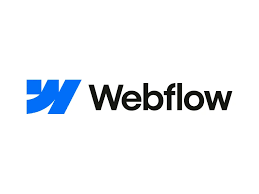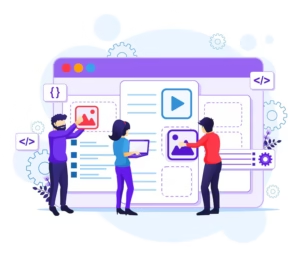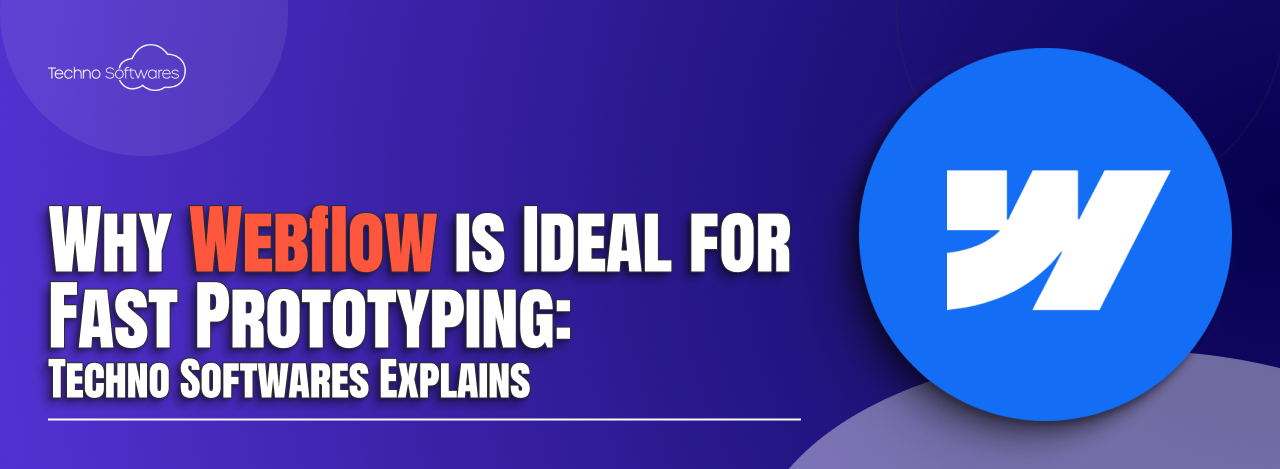Why Webflow is Ideal for Fast Prototyping: Techno Softwares Explains
In the ever-evolving landscape of web design and development, the need for rapid prototyping has become increasingly critical. As we navigate through this digital age, we find ourselves in a constant race against time, where ideas must be transformed into tangible products swiftly and efficiently. This is where Webflow comes into play.
Webflow is a powerful web design tool that allows us to create responsive websites visually, without the need for extensive coding knowledge. Its significance in fast prototyping cannot be overstated, as it empowers designers and developers alike to bring their visions to life in a matter of hours rather than weeks. The importance of Webflow in the prototyping process lies in its ability to bridge the gap between design and development.
Traditionally, the transition from a design mockup to a functional website has been fraught with challenges, often leading to miscommunication and delays. However, with Webflow, we can create high-fidelity prototypes that not only look like the final product but also function like one. This capability allows us to gather feedback early in the design process, iterate quickly, and ultimately deliver a product that meets user needs more effectively.
Key Takeaways
- Webflow is a powerful tool for fast prototyping, allowing designers to create and iterate on designs quickly and efficiently.
- Using Webflow for fast prototyping offers advantages such as a visual interface, code generation, and the ability to create responsive designs without writing code.
- Webflow streamlines the prototyping process by providing a visual editor, pre-built components, and the ability to create reusable design elements.
- Customization and flexibility in Webflow allow designers to create unique and tailored prototypes, with the ability to add custom code and integrate with other tools.
- Webflow offers collaboration and communication features, such as real-time editing and commenting, to facilitate efficient teamwork and feedback during the prototyping process.
The Advantages of Using Webflow for Fast Prototyping
One of the most significant advantages of using Webflow for fast prototyping is its intuitive visual interface. Unlike traditional coding methods, which can be time-consuming and require a steep learning curve, Webflow allows us to drag and drop elements onto the canvas, making the design process more accessible. This user-friendly approach enables us to focus on creativity rather than getting bogged down by technical details.
As a result, we can experiment with different layouts, styles, and interactions without the fear of breaking anything. Moreover, Webflow’s built-in CMS (Content Management System) functionality enhances our ability to prototype quickly. We can create dynamic content structures that allow us to showcase various types of information seamlessly.
This feature is particularly beneficial when we need to present multiple variations of a design or test different content strategies. By leveraging the CMS capabilities, we can ensure that our prototypes are not only visually appealing but also functional and adaptable to different content types.
How Webflow Streamlines the Prototyping Process

Webflow streamlines the prototyping process by providing a comprehensive set of tools that cater to every aspect of web design. From layout creation to responsive adjustments, we have everything we need at our fingertips. The platform’s ability to generate clean, production-ready code automatically means that we can focus on design without worrying about the underlying technicalities.
This efficiency allows us to iterate on our designs rapidly, making adjustments based on user feedback or testing results without starting from scratch. Additionally, Webflow’s version control features enable us to track changes and revert to previous iterations easily. This capability is invaluable during the prototyping phase, as it allows us to experiment freely without the fear of losing our progress.
We can create multiple versions of a prototype, test them with users, and analyze which elements resonate best with our audience. This iterative approach not only enhances our designs but also fosters a culture of continuous improvement within our teams.
Customization and Flexibility in Webflow for Rapid Prototyping
Customization is at the heart of what makes Webflow an exceptional tool for rapid prototyping. The platform offers a wide array of design options that allow us to tailor our prototypes to meet specific project requirements. Whether we are working on a sleek corporate website or a vibrant e-commerce platform, Webflow provides us with the flexibility to create unique designs that align with our vision.
We can manipulate typography, colors, and layouts effortlessly, ensuring that our prototypes reflect the brand identity we aim to convey. Furthermore, Webflow’s flexibility extends beyond aesthetics; it also encompasses functionality. We can integrate various third-party tools and services seamlessly into our prototypes, enhancing their capabilities without extensive coding.
For instance, we can incorporate forms, payment gateways, or analytics tools directly into our designs. This level of customization ensures that our prototypes are not only visually appealing but also equipped with the necessary features for real-world applications.
Collaboration and Communication Features in Webflow for Efficient Prototyping
Effective collaboration is essential in any design process, and Webflow excels in facilitating communication among team members. The platform allows us to share prototypes easily with stakeholders and clients, enabling them to provide feedback directly on the design. This real-time collaboration eliminates the need for lengthy email threads or back-and-forth discussions, streamlining the feedback process significantly.
We can gather insights quickly and make informed decisions based on stakeholder input. Additionally, Webflow’s commenting feature enhances our ability to communicate effectively within our teams. Team members can leave comments directly on specific elements of the prototype, allowing for targeted discussions about design choices or functionality.
This feature fosters a collaborative environment where everyone feels empowered to contribute their ideas and suggestions. As a result, we can create more refined prototypes that reflect a collective vision rather than individual perspectives.
Integrating Interactivity and Animation in Webflow for Prototyping

One of the standout features of Webflow is its ability to integrate interactivity and animation seamlessly into our prototypes. In today’s digital landscape, users expect engaging experiences that capture their attention and keep them coming back for more. With Webflow’s powerful animation tools, we can add dynamic elements to our designs effortlessly.
Whether it’s subtle hover effects or complex animations triggered by user interactions, we have the freedom to create immersive experiences that elevate our prototypes. Moreover, incorporating interactivity into our prototypes allows us to simulate real-world user interactions effectively. We can create clickable buttons, interactive forms, and even multi-step processes that mimic how users will engage with the final product.
This level of detail not only enhances the visual appeal of our prototypes but also provides valuable insights into user behavior during testing sessions. By observing how users interact with our designs, we can identify pain points and areas for improvement before moving into development.
Webflow’s Responsive Design Capabilities for Rapid Prototyping
In an era where mobile devices dominate internet usage, responsive design is no longer optional; it is essential. Webflow’s responsive design capabilities empower us to create prototypes that look stunning across various screen sizes and devices. The platform allows us to adjust layouts and styles for different breakpoints effortlessly, ensuring that our designs maintain their integrity regardless of how they are viewed.
This adaptability is crucial when we consider the diverse range of devices users may employ to access our websites. Furthermore, Webflow’s responsive design features enable us to test how our prototypes will perform on different devices in real-time. We can switch between desktop, tablet, and mobile views with ease, allowing us to make necessary adjustments on the fly.
This capability not only saves us time during the prototyping phase but also ensures that we deliver a polished final product that meets user expectations across all platforms.
Why Webflow is the Ideal Tool for Fast Prototyping
In conclusion, Webflow stands out as an ideal tool for fast prototyping due to its unique combination of visual design capabilities, customization options, collaboration features, interactivity integration, and responsive design functionalities. As we continue to navigate the complexities of web design in a fast-paced environment, having a tool that streamlines our workflow while empowering creativity is invaluable. With Webflow at our disposal, we can transform ideas into high-fidelity prototypes quickly and efficiently.
Ultimately, embracing Webflow not only enhances our prototyping process but also positions us for success in delivering exceptional user experiences. By leveraging its powerful features, we can iterate rapidly based on user feedback and ensure that our final products align with both business goals and user needs. As we look toward the future of web design and development, it is clear that Webflow will remain a cornerstone in our toolkit for fast prototyping and beyond.
If you’re exploring the benefits of rapid prototyping with Webflow, you might also be interested in understanding how software development can significantly enhance your business’s return on investment. Techno Softwares provides a detailed analysis on this topic in their article, How You Can Increase Business ROI with Software Development Services. This article delves into how tailored software solutions can streamline operations, reduce costs, and ultimately lead to a higher ROI, which could be beneficial when integrating tools like Webflow into your business strategy.
FAQs
What is Webflow?
Webflow is a web design and development platform that allows users to design, build, and launch responsive websites visually, without writing code.
What is fast prototyping?
Fast prototyping is the process of quickly creating a preliminary version of a website or web application in order to test and validate design ideas and functionality.
Why is Webflow ideal for fast prototyping?
Webflow is ideal for fast prototyping because it allows designers and developers to quickly create and iterate on website designs without writing code, and provides a range of pre-built components and templates to speed up the prototyping process.
What are the benefits of using Webflow for fast prototyping?
Using Webflow for fast prototyping allows for rapid iteration, easy collaboration, and the ability to create fully functional prototypes without writing code. It also provides a visual interface that makes it easy to design and customize websites.
How does Webflow help in speeding up the prototyping process?
Webflow speeds up the prototyping process by providing a range of pre-built components and templates, a visual interface for designing websites, and the ability to quickly create and iterate on designs without writing code.





